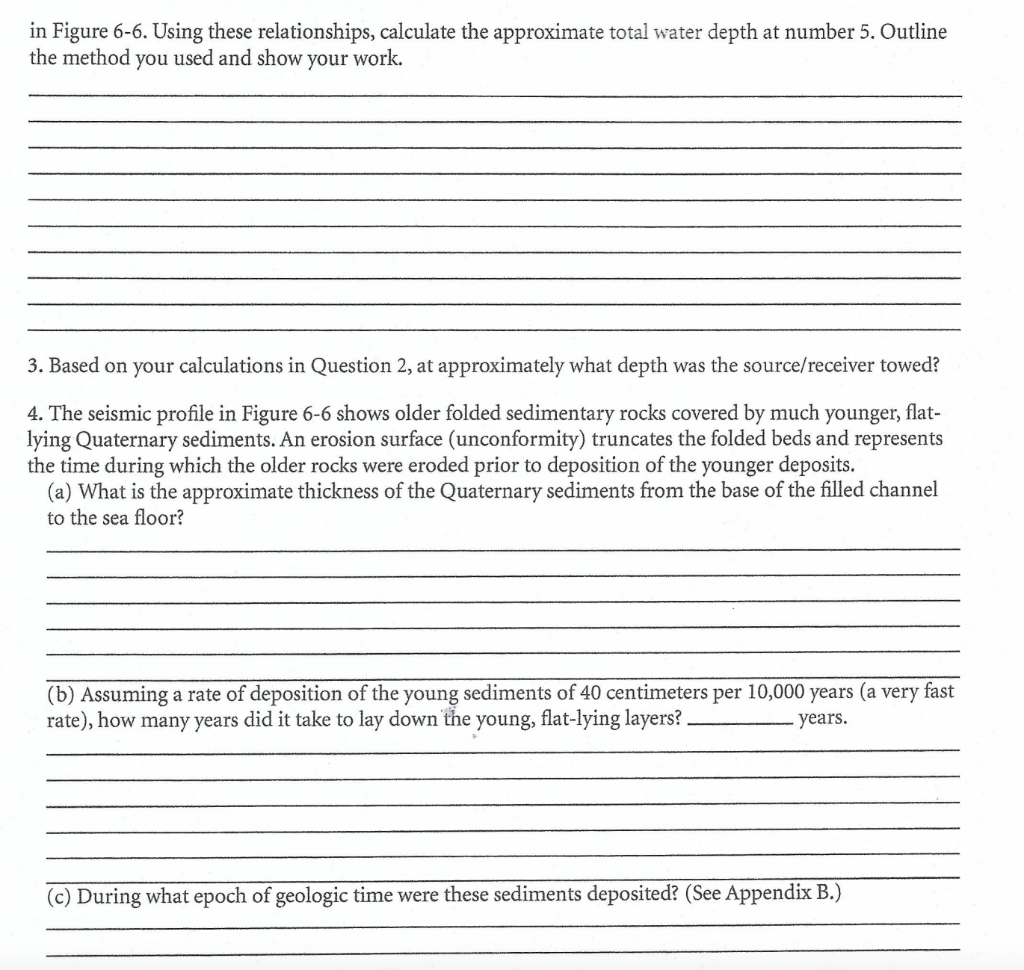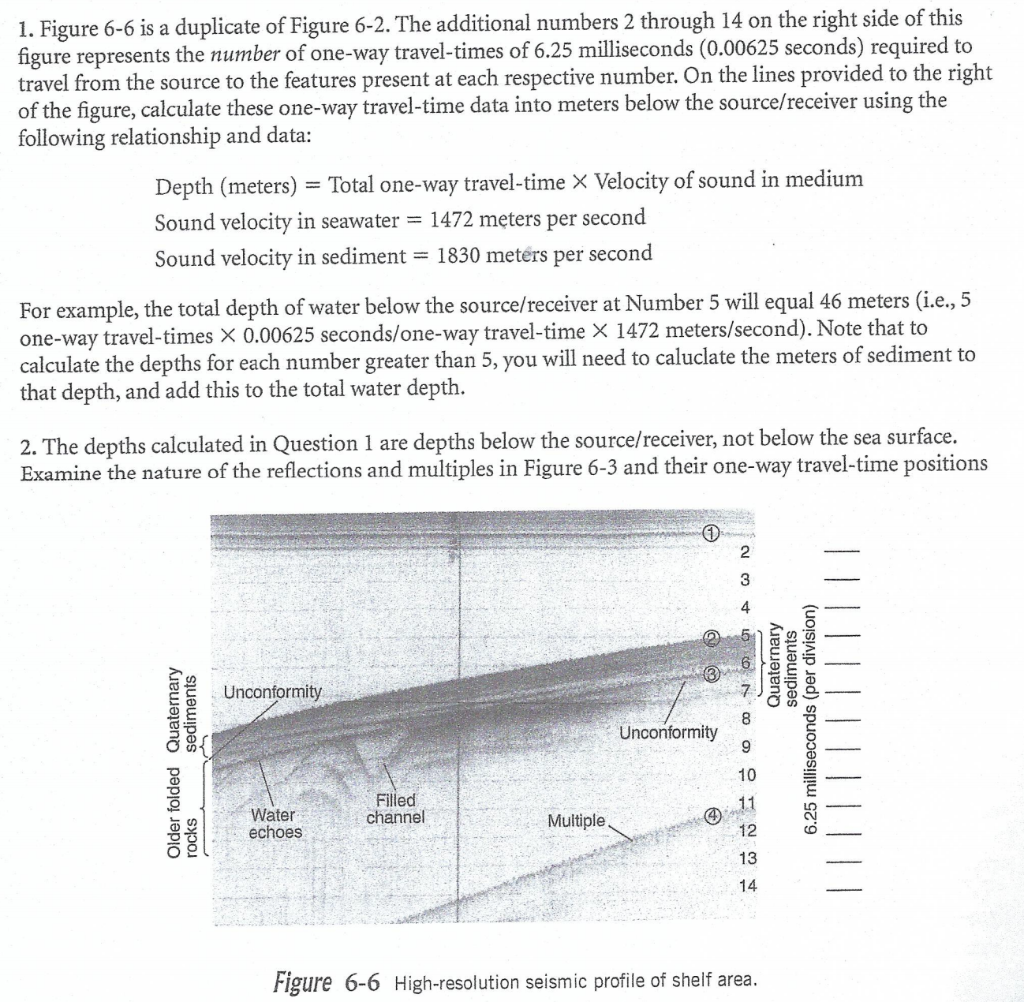Question: 1. Figure 6-6 Is A Duplicate Of Figure 6-2. The Additional Numbers 2 Through 14 On The Right Side Of This Figure Represents The Number Of One-way Travel-times Of 6.25 Milliseconds (0.00625 Seconds) Required To Travel From The Source To The Features Present At Each Respective Number. On The Lines Provided To The Right Of The Figure, Calculate These One-way …

Transcribed Image Text from this Question
1. Figure 6-6 is a duplicate of Figure 6-2. The additional numbers 2 through 14 on the right side of this figure represents the number of one-way travel-times of 6.25 milliseconds (0.00625 seconds) required to travel from the source to the features present at each respective number. On the lines provided to the right of the figure, calculate these one-way travel-time data into meters below the source/receiver using the following relationship and data: Depth (meters) = Total one-way travel-time x Velocity of sound in medium Sound velocity in seawater = 1472 meters per second Sound velocity in sediment = 1830 meters per second For example, the total depth of water below the source/receiver at Number 5 will equal 46 meters (i.e., 5 one-way travel times X 0.00625 seconds/one-way travel-time X 1472 meters/second). Note that to calculate the depths for each number greater than 5, you will need to caluclate the meters of sediment to that depth, and add this to the total water depth. 2. The depths calculated in Question 1 are depths below the source/receiver, not below the sea surface. Examine the nature of the reflections and multiples in Figure 6-3 and their one-way travel-time positions 2 3 4 Unconformity Quaternary sediments 6.25 milliseconds (per division) Unconformity sediments Older folded Quaternary rocks 9 10 Water echoes Filled channel Multiple © 11 12 13 14 Figure 6-6 High-resolution seismic profile of shelf area. in Figure 6-6. Using these relationships, calculate the approximate total water depth at number 5. Outline the method you used and show your work. 3. Based on your calculations in Question 2, at approximately what depth was the source/receiver towed? 4. The seismic profile in Figure 6-6 shows older folded sedimentary rocks covered by much younger, flat- lying Quaternary sediments. An erosion surface (unconformity) truncates the folded beds and represents the time during which the older rocks were eroded prior to deposition of the younger deposits. (a) What is the approximate thickness of the Quaternary sediments from the base of the filled channel to the sea floor? (b) Assuming a rate of deposition of the young sediments of 40 centimeters per 10,000 years (a very fast rate), how many years did it take to lay down the young, flat-lying layers? years. (c) During what epoch of geologic time were these sediments deposited? (See Appendix B.)


